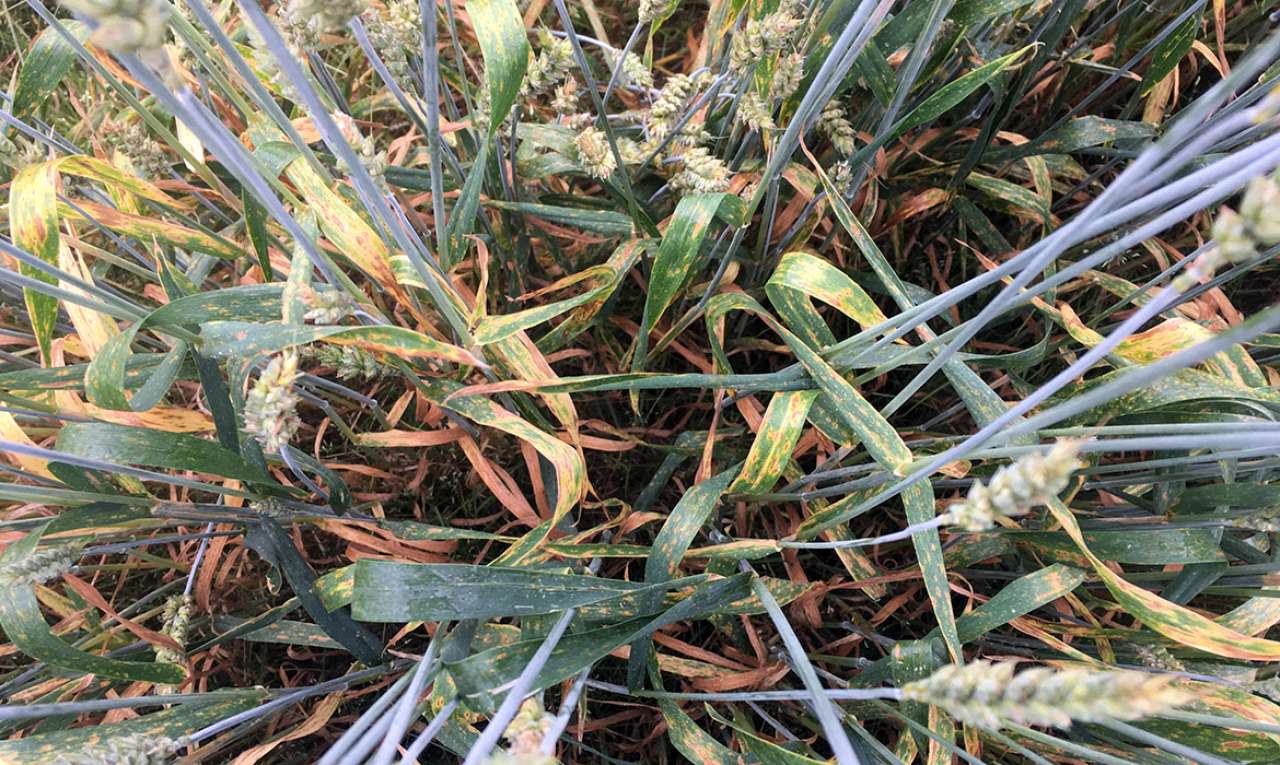Innovative detection methods for fungal diseases

Leaf blotch disease in wheat. Photo: Andrea Ficke
Fungal plant diseases are caused by organisms that are dispersed by microscopically small spores that are not visible to the unaided eye.
Once these spores have landed on a suitable host and successfully started to colonized plant tissue, we will be able to see typical disease symptoms, such as white mycelium (fungal hyphae), small black pycnidia containing spores, spore pustules, light to dark brown discoloration of leaves, stems or other parts of the crop.
Once we can see clear disease symptoms, the fungus has already produced more spores and infected neighboring host plant in the crop stand. Plant diseases can spread very quickly through a stand of susceptible hosts under conducive weather conditions.
The most common practices to reduce fungal diseases in agricultural crops are preventive measures, such as the use of disease resistant varieties, crop rotations and ploughing, as well as acute actions, such as the use of fungicides.
Integrated pest management (IPM) is based on the principle that the use of fungicides should be aligned with the actual need to control diseases in the field. Risk models to determine if and when fungal diseases are likely to attack the crop, help the farmer to determine the best time to use fungicides.
In addition, we have started to work on sensors that can determine if and where a certain disease is present in the field. A detailed map of diseases in the field would allow us to align fungicide sprays not only to the need in time, but also in space, enabling the farmer to implement site-specific disease control.
Contacts


Services
VIPS
VIPS is an online forecast and information service for decision support in integrated management of pests, diseases and weeds.
More information To serviceContacts

